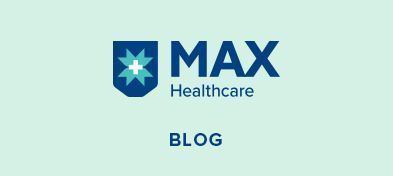Facial Reanimation: A boon to cure paralysis
By Dr. Sunil Choudhary in Aesthetic And Reconstructive Surgery
Sep 08 , 2016 | 2 min read
1
Your Clap has been added.
Thanks for your consideration
Share
Share Link has been copied to the clipboard.
Here is the link https://www.maxhealthcare.in/blogs/facial-reanimation-a-boon-to-cure-paralysis
Facial palsy (Bell’s palsy) is the paralysis of facial muscles primarily caused due to the secondary damage to the facial nerve. It mostly affects the entire face plus the forehead and causes severe weakness of arms, legs and hands. It comes unexpectedly, without informing and peaks within 72 hours. In 80% of the patients it usually disappears in few weeks or months. According to the "National Institute of Neurological Disorders and Stroke", Bell’s palsy is the most common form of facial paralysis. It is the most frightening time for a patient because initially you feel that it has been caused due to stroke. There are many reasons for facial palsy and people suffering from it face a lot of difficulties.
What causes it?
Facial palsy can make a person feel embarrassed and loosen their confidence. The common causes are:
- High blood pressure
- Trauma and injury to brain, skull or face
- Rare genetic syndrome in newborns such as Moebius syndrome. However, 90% of babies recover without treatment.
- Surgical causes such as brain tumor removal (e.g. acoustic neuroma surgery).
- Palsy caused by some viral infection
Know the Symptoms
Most patients who develop facial palsy have it only on one side of the face. This causes skewness of the face as the opposite side working muscles are pulled. On the affected side patients are unable to close eyes, raise eyebrows, smile, and pout as the whole mouth gets twisted on the opposite side. You may witness:
- Severe headache or dizziness
- Trouble in talking
- Facial pain
- Pain in ears, sensitivity to sound
- Muscle twitching
Facial palsy can affect anyone, the young, the old and even newborns. Patients with facial palsy find it not only difficult to socialise but they also develop serious problems with speech and feeding. Unfortunately, most people think facial palsy as a mere cosmetic problem but it isn’t just a cosmetic issue. It's actually about function and more importantly it is about our identity.
What are the Treatment options?
Facial palsy reconstruction is called 'Facial Reanimation'. The modern reconstruction technique uses a working muscle like temporalis from the temple or a gracilis muscle transplant from patients’ thigh. Also, sometimes tough tissue called “fascia lata” is used from the patients’ thigh as suspension slings for the face.
Temporalis muscle transfer with a combination of face lift techniques is a powerful single stage procedure capable of reversing most of the facial palsy features. For better eye closure, the lower eyelid sling is tightened and sometimes the outer side suspended, and adhered to the upper eyelid corner called lateral tarsorrhaphy.
How do you care at home?
Eye Care: Try to blink your close your eyes more often otherwise it may cause dryness, sores and infections or vision problems. You can keep your eyes moist by:
- using eyedrops during night and day (do consult your doctor to know how often to use)
- using fingers to open or close eyes
- wearing an eye patch while sleeping and use goggles during rest of the day.
Facial Exercises: Post surgery, when your facial nerve s have started to work again, doing easy exercises will strengthen them more. Massage your forehead, lips and cheeks with cream to relax the muscles.
Mouth Care: In case, you feel there is no saliva on your tongue, brush and floss often, as excessive dryness may lead to tooth decay or gum diseases. Consume soft foods like yoghurt as they are easy to swallow.

Written and Verified by:
Related Blogs

Dr. Sunil Choudhary In Aesthetic And Reconstructive Surgery
Nov 07 , 2020 | 2 min read

Dr. Sanjit Singh In Aesthetic And Reconstructive Surgery , Dental Care
Nov 07 , 2020 | 3 min read

Dr. Sunil Choudhary In Aesthetic And Reconstructive Surgery
Nov 07 , 2020 | 1 min read
Blogs by Doctor

Common Non-Surgical Procedures for Facial Rejuvenation
Dr. Sunil Choudhary In Aesthetic And Reconstructive Surgery
Nov 07 , 2020 | 2 min read

Dr. Sunil Choudhary In Aesthetic And Reconstructive Surgery
Nov 07 , 2020 | 1 min read

Thermi RF- A Revolutionary Nonsurgical Rejuvenation Tool!
Dr. Sunil Choudhary In Aesthetic And Reconstructive Surgery
Oct 20 , 2016 | 2 min read
Most read Blogs
Get a Call Back
Related Blogs

Dr. Sunil Choudhary In Aesthetic And Reconstructive Surgery
Nov 07 , 2020 | 2 min read

Dr. Sanjit Singh In Aesthetic And Reconstructive Surgery , Dental Care
Nov 07 , 2020 | 3 min read

Dr. Sunil Choudhary In Aesthetic And Reconstructive Surgery
Nov 07 , 2020 | 1 min read
Blogs by Doctor

Common Non-Surgical Procedures for Facial Rejuvenation
Dr. Sunil Choudhary In Aesthetic And Reconstructive Surgery
Nov 07 , 2020 | 2 min read

Dr. Sunil Choudhary In Aesthetic And Reconstructive Surgery
Nov 07 , 2020 | 1 min read

Thermi RF- A Revolutionary Nonsurgical Rejuvenation Tool!
Dr. Sunil Choudhary In Aesthetic And Reconstructive Surgery
Oct 20 , 2016 | 2 min read
Most read Blogs
- CAR T-Cell Therapy
- Chemotherapy
- LVAD
- Robotic Heart Surgery
- Kidney Transplant
- The Da Vinci Xi Robotic System
- Lung Transplant
- Bone Marrow Transplant (BMT)
- HIPEC
- Valvular Heart Surgery
- Coronary Artery Bypass Grafting (CABG)
- Knee Replacement Surgery
- ECMO
- Bariatric Surgery
- Biopsies / FNAC And Catheter Drainages
- Cochlear Implant
- More...



